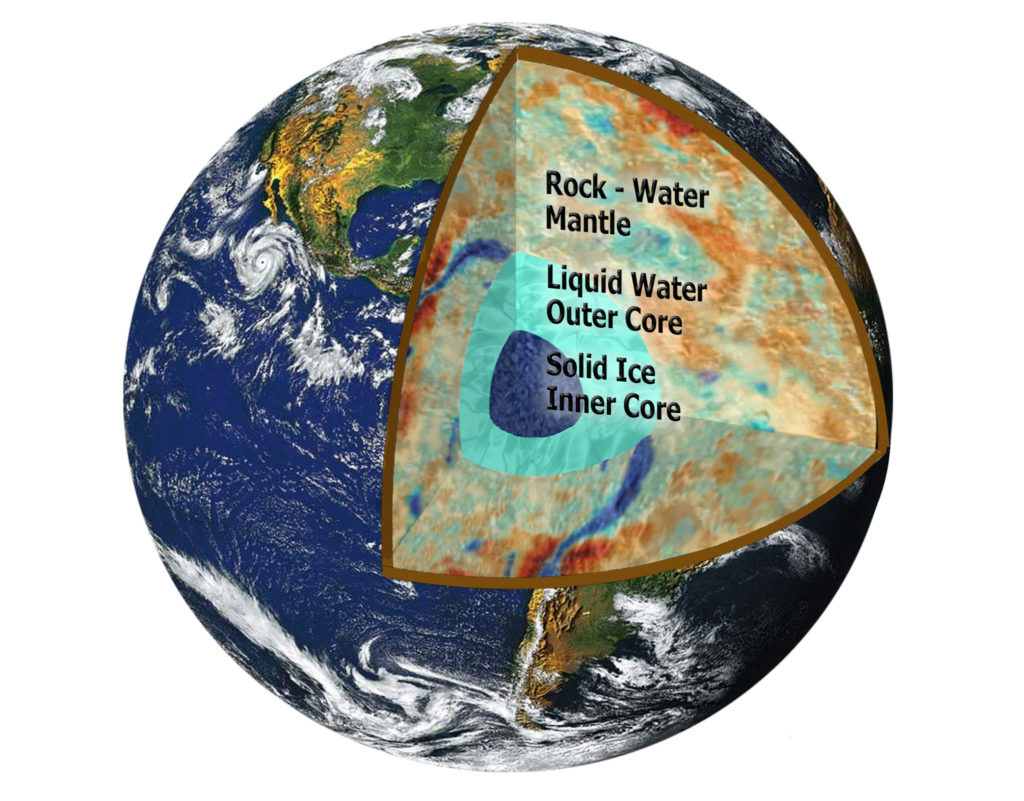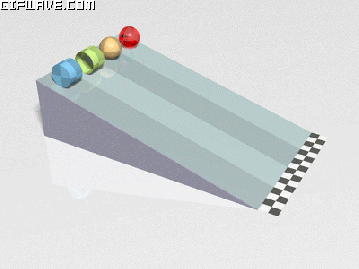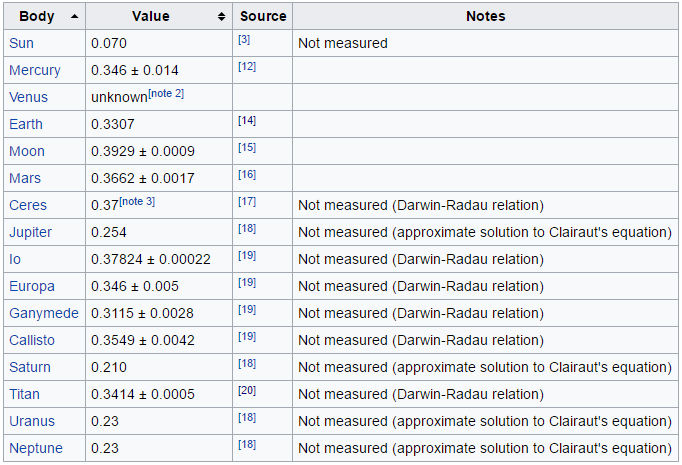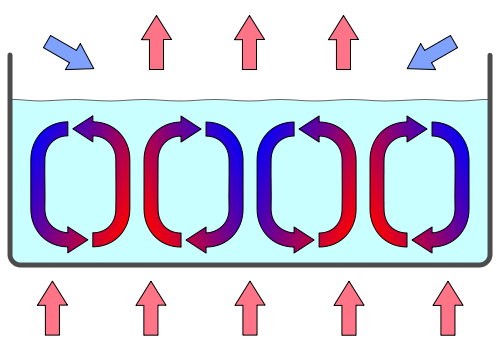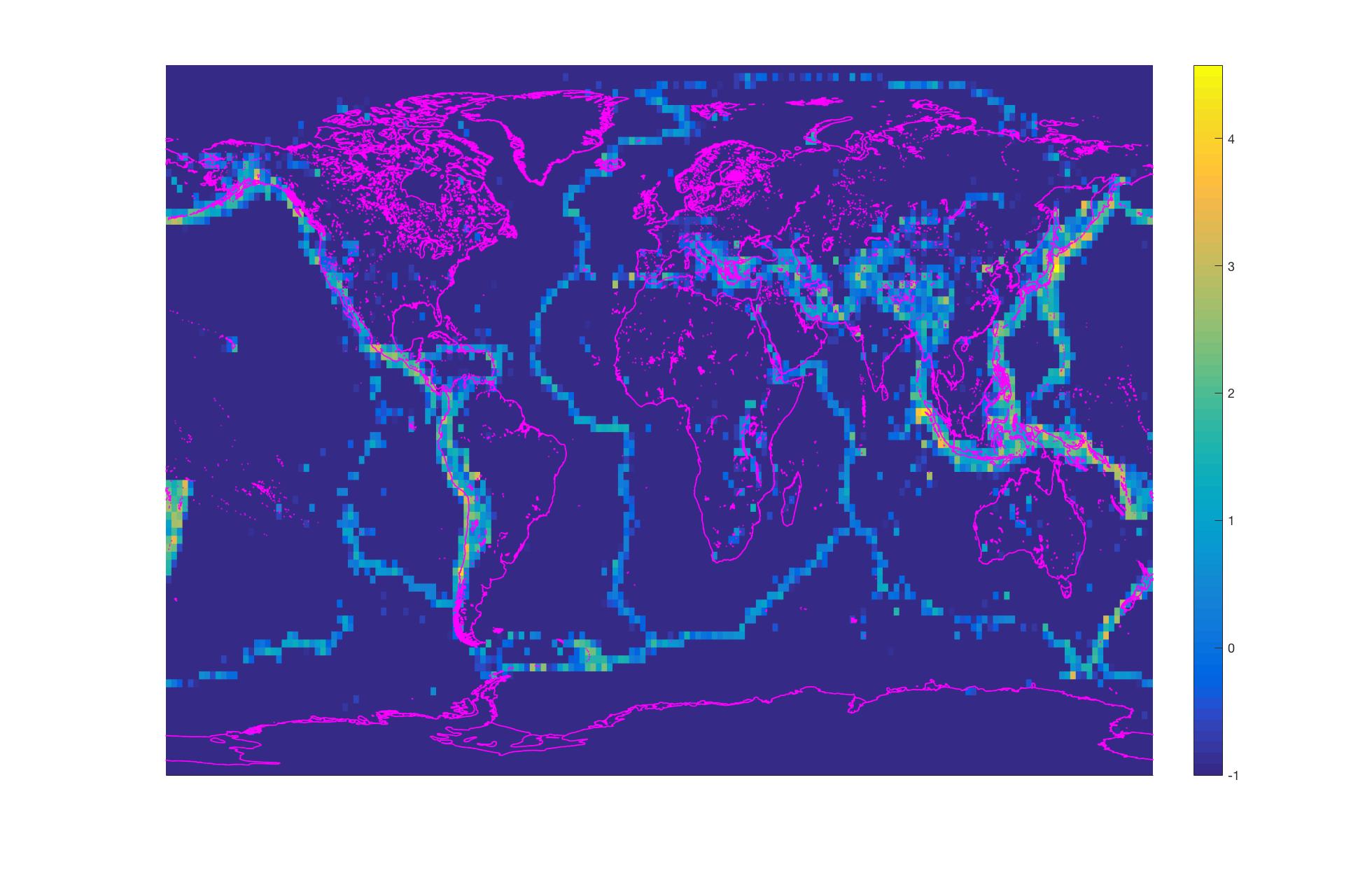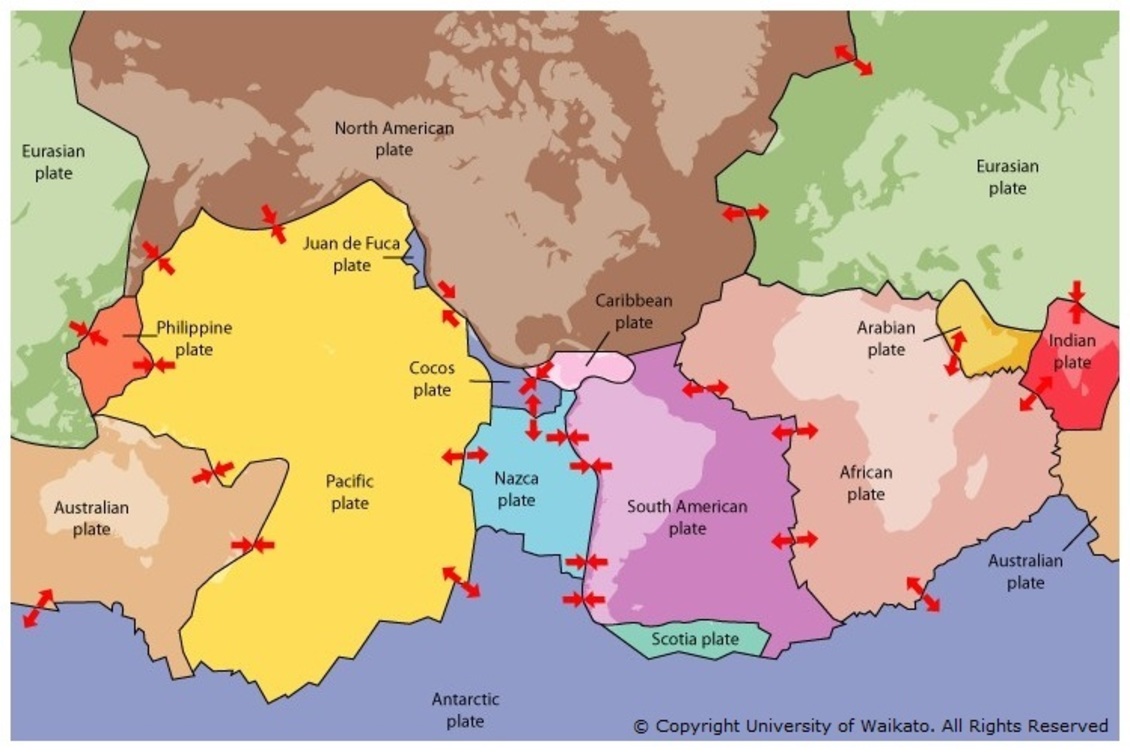Last week, I wrote a response to one Rich Trzupek, a guest blogger for the discredited Heartland Institute, who was outraged that climate scientist Michael Mann had said this:
Proof is for mathematical theorems and alcoholic beverages. It’s not for science…. Science works in evidence through best explanations, most credible theories, and so in a sense we’re at a disadvantage because we have to play by the rules, the other side doesn’t… They’re not offering up credible alternatives or explanations. In most cases they’re trying to pick holes. Not real holes, just things that the public will think are holes, in the science. We are at a disadvantage.
Trzupek was so incensed because it was obvious to him that,
Mann’s attempt to separate proof from science stems from increasing public awareness that the warming predicted by the high-sensitivity models that Mann and others have championed just hasn’t occurred over the last fifteen years. No matter. You don’t need “proof” when you have “credible theories.”
That comes as something of a shock to me. When I was going to school to earn my degree in chemistry, we were taught that science was indeed all about absolute truths and proofs at the end of the day. “Credible theories” is how you got to those truths, not an alternative to them.
My response (which was similar to those of Tamino and Phil Plait) was to point out that Professor Mann was correct, and Trzupek appeared to be hopelessly confused. “Credible theories” (which are just plausible explanations for some set of data) are the best science has to offer, and even if those theories happen to coincide with “absolute truths,” human beings would have no way of absolutely “proving” that. This is all standard philosophy of science fare, which Trzupek could have found discussed in any introductory textbook on the subject. It’s also an important distinction in a practical sense, because the refusal to accept any of our explanations as the final truth is one thing that makes modern science a much more powerful system of thought than the various natural philosophies that preceded it. Moreover, it’s important to understand that, since scientific theories are all tentative to one degree or another, they are all susceptible to nitpicking. All of them have a few grey areas where the predictions don’t exactly match the data, and many times we don’t know whether the problem is with the theory, the data, or both. And even if we know the theory isn’t quite right, it still may be very good for predicting some things, so we hang onto it until someone comes up with a “better” theory–one that explains more data, or at least explains the same data in a more simple and elegant manner.
All of this is quite inconvenient for the intellectually lazy, because it requires continual sifting and re-sifting of evidence. There usually aren’t any “silver bullets”–single tests that can make or break a theory–and so there is always at least a little subjectivity involved in theory choice. This makes it very difficult or impossible to achieve 100% consensus among scientists about anything.
It’s interesting to read the discussion in the comments section of Trzupek’s post, as well as the repost on Watt’s Up With That? Some of the commenters were hard-core climate change contrarians–real Mann-haters–but even some of them had to point out that, in this case, Mann was right.
Now Trzupek has written a follow-up post to reassure his readers that he’s not as uninformed as his initial post makes him appear.
Ah, me. It seems that I wrote a post herebouts that was intended to hold AGW-panickers like Michael Mann to something of a standard, that standard being that they should have an obligation to show that their theories are pretty darn reliable and consistent with real world evidence.
In my day job, dealing with air quality science and regulations, that’s the kind of standard I am held to by the EPA, and it seems reasonable to expect that people who expect us to change our entire way of life in deference to a theory should be held to the same kind of standard. In attempting to make that point, I used the word that Mann had used – “proof” – and that it is of course that is the word that Mann’s supporters seized upon to demonstrate what an utter pratt I am….
Anyway, the point of my particular screed was not to reaffirm the difference between Chesterson’s (rather obvious) point that two plus two equals four because there can be no other result, and the scientific need for proof in our discipline’s eternal search for truth. It was to re-emphasize the fact that offering evidence that your particular hypothesis approaches reality is even more important in the scientific sphere. Such evidence is not to be despised, but rather to be embraced.
Did you get that? When Trzupek accused Professor Mann of “redefin[ing] science” by saying that science doesn’t deal in “proof,” but instead only has recourse to “credible theories”… when Trzupek said that science is “indeed all about absolute truths and proofs,” and that credible theories are but steppingstones to those absolute truths… he was really just saying that scientific theories should be supported by evidence. Well, so much for “absolute truths and proofs.” But then, how was Mike Mann “redefining” anything? How can a theory be “credible” if it isn’t backed by evidence, and how can it be a “best explanation” if it doesn’t explain real data?
Could it be that, just as his critics charged, Trzupek’s criticism of Mike Mann was completely unfounded… just another in a string of bizarre attempts by unhinged wackos to target a scientist whose work, although not without faults, has repeatedly withstood the most intense scrutiny?
Trzupek doesn’t want to be seen that way, and it was especially distressing to him that his article was criticized on Phil Plait’s Bad Astronomy blog. You see, Trzupek is a fan of Phil’s, and much of his follow-up post is a friendly invitation for Phil to reconsider his views about climate change “skeptics” [sic].
If you’re buying into Mann’s argument that everyone on the “other side” is a tool of the energy lobby, there’s no point in having a conversation — for that’s not really an argument, but is rather an excuse to not have an argument. I’ve interacted with a lot of people on the skeptical side of the aisle and they are – without exception – good, decent, sincere and well-meaning folks. That goes in particular for the folks at Heartland. People like Joe and Diane Bast, James Taylor, Jay Lehr, and Jim Lakely are the sorts of people you’d like to have as your neighbors. That’s the reason I choose to help them out whenever I can and why I have never – and would never – accept a dime from them.
Well, I can’t speak for Phil Plait, but since Rich Trzupek’s plea seems sincere, I figure I’ll try to explain to him why he has such a hard time getting those on the other side of the fence to take him seriously.
Dear Rich,
I noted that in your latest Heartland blog post you seem bothered that Phil Plait, a scientist whose work you greatly admire, was so dismissive of your article about how Michael Mann was trying to “redefine” science. You seem very sincere in your efforts to convince Phil and others that you and your friends associated with, or employed by, the Heartland Institute are nice, sincere people with genuine questions about the validity of mainstream climate science. And while you joke about what a thick skin you have because you “routinely get called everything from a liar to a baby-killer,” I can tell that it bothers you that you are criticized so vigorously “when [you] go after the Sierra Club or NRDC or other environmental organizations for blowing the tiniest risk out of all reasonable proportions.”
I think I understand your point of view, to some extent. I’m a geochemistry professor, but I’m also a lifelong pro-business Republican who has never picketed or marched to support or protest any cause of any kind, environmental or otherwise. I’m just not the type. I’ve witnessed excesses by some environmentalists, too, and while I agree that these people are usually well intentioned, I just don’t think they have always thought through the consequences of the policies they advocate.
I’m also a former climate change “skeptic”–meaning that I didn’t buy that humans were going to cause much damage by burning fossil fuels. Now that I have taken a harder look at the issue, I have changed my mind. Yes, there are extremists on this side of the fence–there always are–but the people running the show over here are, in my opinion, reasonable people and conscientious scientists who have no interest in trashing the world economy or taking extreme measures to reduce the human population. The parts I am able to check of the science they use to back up their claims seem generally good and reasonable, and most of these people seem willing to bend when it comes to the kinds of solutions they will support.
“Good and reasonable” science isn’t necessarily right, however, so I probably would still be more of a fence sitter if I hadn’t also been checking into the claims of some of the most prominent contrarian voices. I really wanted to believe them, but what I have found so far is that the most prominent contrarians–the ones hailed as climate Galileos and the like–are either complete crackpots or are so blinded by ideology that they don’t recognize that their science on the subject is just awful. Oh, it’s not that I never see anything coming from that side of the fence that’s worth hearing, but those points are really few and far between. For the most part, what I’ve seen over there has seemed kind of creepy.
If you really want people like Phil Plait–scientists who are on the other side of the fence on the climate change issue and have done some checking for themselves–to take you seriously, I have to say that you have an uphill climb ahead of you. Allow me to point out a few aspects of your last two Heartland posts, for instance, where I think you were shooting yourself in the foot.
1. Your first argument was flatly wrong, and your second made no sense. Reasonable people try to be more self-critical than that.
All your talk about how Michael Mann was “redefine[ing] science” because he said that science deals in credible theories and best explanations, not “proof,” was just wrong. Pick up any introductory philosophy of science textbook, and you’ll be treated to historical case studies and logical analyses to demonstrate that Mann had his description of the nature of science exactly right. You’ll also find that your statement that science is “indeed all about absolute truths and proofs,” and that credible theories are “how you [get] to those truths,” is wrong. Scientific theories don’t graduate into “absolute truths.” They remain theories, no matter how well supported they are.
But then in your follow-up post you seemed to switch gears, claiming that all you meant was that science requires “offering evidence that your particular hypothesis approaches reality.” And what, exactly, did Professor Mann ever say that would make you think he believes otherwise? Considering how pointed your language was about “absolute truth” and “redefining science,” it seems clear that you are backing off your original claim, but refusing to apologize to Professor Mann for an obviously misguided criticism.
2. Your initial criticism and subsequent failure to apologize make it seem like you are part of the rabid lynch mob who have been trying to ruin Mike Mann’s reputation over the past several years. These people creep us out.
The fact that you failed to apologize to Mike Mann for your obvious blunder, but instead decided to bluster about how thick-skinned you are, daring your audience to compare you to Jerry Sandusky, makes me wonder whether you are one of those obsessed weirdos who are constantly trying to ruin Prof. Mann.
Climate change contrarians generally seem to have problems with Mike Mann’s “hockey stick” reconstructions of Northern Hemisphere surface temperatures over the past few hundred to couple thousand years. I understand that it’s a visually stunning illustration of the fact that the Earth’s surface temperature has lately been doing something different than it was in the relatively recent past, but it’s not as if it’s the lynchpin of all modern climate science. I would think it was, considering the rabidness of the response from the contrarians.
The anti-hockey-stick mob includes two camps. Those in the first camp are the sort who can read some innocuous reference to “Mike’s Nature trick” in an e-mail and become irreversibly convinced that there is some giant conspiracy going on. The others are the ones who, even though they don’t have a clue what a “principal component” is, are convinced that nitpicking, poorly done statistical analyses (such as those by McIntyre and McKitrick) prove that Mann purposefully did something funny with his data… even though over a dozen subsequent paleo-proxy reconstructions, using different proxy mixes and different statistical techniques, by different groups, have given very close to the same answer Mann et al. got.
How many panels need to clear Mann of wrongdoing, and how many studies need to show that, whatever the flaws in his analysis, his answer was pretty close, before these people stop trying to get various rabidly anti-government attorneys general and congressmen to launch investigations to harass Mann? To those of us over on the other side of the fence, this behavior is really creepy–something you’d see in a horror movie about some murderous cult.
3. You demonstrate almost a complete lack of understanding about how scientists use models, and what surface temperatures have to do with climate physics.
After we strip away the ridiculous charge that Professor Mann was “redefin[ing] science,” what we’re left with is your contention that the standard climate models are obviously wrong because the warming trend over the last 15 years isn’t statistically significant.
For me (as someone with some experience doing numerical modeling of Earth processes,) it’s a bit odd to see people huddled around the global temperature reports every month to see for how many years they can claim the warming trend isn’t statistically significant. While the models don’t predict that such a long period with statistically insignificant warming will happen very often, they do predict that they will happen, once in a while. But suppose the flatter (not totally flat) trend goes on for a few more years? What will that prove? It seems to me that it will prove that the models aren’t that great at predicting ENSO fluctuations (which we already knew), because the most obvious physical reason for the recent trend is that lately the ENSO cycle has leaned more toward the La Niña end. In other words, more heat than average has been shoved down into the deeper ocean due to fluctuations in ocean currents. Measurements of ocean heat content at different depths bear this out, and show that the Earth as a whole (not just the narrow band right at the surface) has been heating up just like it has been for decades. When the cycle flips and we start getting more El Niños, the surface temperature will go up faster.
Students in pretty much every numerical modeling course are introduced to this quotation by the statistician, George Box. “Essentially, all models are wrong, but some are useful.” Even if the physics represented by the models were absolutely perfect, plugging those into a 3D grid where the boxes are kilometers across would lead inevitably to errors, especially in the short term. This is especially true for a chaotic system like the weather. So the idea that we should conclude they are useless just because they don’t USUALLY predict warming slowdowns quite so long seems patently absurd to me.
If you want scientists to take you seriously, make some kind of effort to learn how they use models, and what deviations from model projections might mean. Take the time to learn the difference between short-term chaos and long-term predictability. And take the time to learn a little climate physics–which will teach you that the short-term surface temperature isn’t necessarily a good indication of how much total heat the Earth is absorbing.
4. You are writing for the Heartland Institute. Like it or not, their reputation adheres to you, especially when you specifically put forward certain Heartland operatives and associated scientists as wonderful folks just out to find the truth. We have experience with these people.
Take your Heartland pal James Taylor, for instance. I don’t know the guy personally, but it’s obvious from his writing that he’s a libertarian ideologue who is WAY too easily convinced that any study tending to confirm his bias against the utility of government regulation is the last nail in the coffin of mainstream science. For instance, he proclaimed, regarding a recent study by Roy Spencer and Danny Braswell, that “New NASA Data Blow Gaping Hole in Global Warming Alarmism.” Well, the thing is that Taylor is a lawyer, and wouldn’t have a clue about the significance of any satellite data if it smacked him upside the head. It turned out that the situation wasn’t quite as dire as Spencer and Braswell claimed. They were making a statistical argument without calculating any uncertainties, for one thing, and they just happened to leave out most of the data they said they had analyzed, some of which completely undercut their main argument. In the end, all that could be said of their analysis was that it showed that the timing of certain short-term fluctuations in weather is better predicted by some GCMs than others. Which was already well known.
Now take another of your Heartland pals, Jay Lehr, Ph.D. Jay isn’t a mere lawyer like James Taylor–he’s a groundwater hydrologist with a Ph.D. [UPDATE: Yeah, Jay Lehr is a really great guy. He was successfully prosecuted for defrauding the EPA.] A few years ago, he gave a glowing review to Roy Spencer’s book, The Great Global Warming Blunder. For Lehr, Roy Spencer is “one of the nation’s leading climate scientists”.
Spencer documents that the science clearly shows man does not in fact control the climate in any significant way and the natural forces that continually alter the earth’s climate are relatively easy to discern and understand….
I can assure you that anyone with honesty and an IQ exceeding plant life will, after reading Spencer’s book, at last understand the workings and proper role of mathematical climate models.
Being a “skeptic” who rejects the majority view of climate specialists because he’s a tough-minded iconoclast–a true scientist–he came to these conclusions after he checked into Spencer’s models for himself, right?
Wrong. I know this because I did an extensive review of Spencer’s book myself. One of Spencer’s main claims was that a natural mode of climate oscillation, the Pacific Decadal Oscillation (PDO), has lately been the main driver of global climate change, and that climate sensitivity to greenhouse gases is low. He supported this conclusion by creating a simple climate model that, when forced by the PDO index, still explained most of the 20th century warming. I reproduced Spencer’s model, showing that there were so many free parameters that an infinite number of solutions existed. The statistical technique he used to obtain “best-fit” parameters could have given him any climate sensitivity he wanted. In addition, to get his model to resemble the data at all, he had to start his model wildly out of equilibrium in the year 1900. Physicist Arthur Smith followed up my review by doing a mathematical proof, showing that Spencer’s model HAS TO have an infinite number of solutions. He also showed that if the model had been started 1000 years ago, Spencer would have had to have the starting temperature be a few trillion degrees out of equilibrium to properly reproduce the 20th century trend. In other words, Spencer’s modeling effort was pure junk. It didn’t even deserve the epithet “junk science.”
You might object that you’d believe Roy Spencer and Jim Lehr over me any day, but not so fast. If you got a degree in chemistry, you should have the tools to learn how to evaluate Spencer’s model. I can teach you how to code it in MATLAB (and maybe even Excel), explain all the relevant statistics, and so on. We could make a “Roy Spencer’s PDO Model Study Group,” and include others you trust. Roy Spencer refuses to answer my criticisms, so maybe a smart guy like you could do him a favor and put them to rest.
Finally, Heartland always invites Christopher Monckton to speak at their climate conference. Oh, please.
In any case, this is what other scientists see when they look at Heartland–a few ideologues of varying intelligence who aren’t nearly as “skeptical” as they want people to believe.
5. No really, we’re talking about the Heartland Institute, which has shilled for the tobacco industry, for Pete’s sake.
For me, it’s not the climate change disinformation campaign that’s the worst thing about Heartland–it’s the tobacco. Back in the 1990’s, Heartland was paid by Philip Morris to distribute materials questioning the health risks of second-hand smoke. [UPDATE: Heartland is actually still partly funded by tobacco companies like Philip Morris and Reynolds. H/T John Mashey.] Here we have a case where, after decades of obfuscation, the tobacco industry now generally admits that smoking is harmful to health, but now they are trying to maintain that second-hand smoke isn’t harmful. Smokers can’t sue the tobacco companies because cigarette packages have health warnings stamped on them, and the tobacco companies want to protect themselves from people who are involuntarily exposed to tobacco smoke by maintaining that second-hand smoke isn’t harmful. A committee of the UK House of Commons, after conducting an inquiry in 2000 about the tobacco industry’s behavior in such matters, concluded,
In analysing the past and present record of the tobacco industry’s response to the health risks of smoking we have observed a pattern. It seems to us that the companies have sought to undermine the scientific consensus until such time as that position appears ridiculous. So the companies now generally accept that smoking is dangerous (but put forward distracting arguments to suggest that epidemiology is not an exact science, so that the figures for those killed by tobacco may be exaggerated); are equivocal about nicotine’s addictiveness; and are still attempting to undermine the argument that passive smoking is dangerous. The current exceptions to this – based on the evidence they gave us – are firstly Philip Morris who claim no longer to comment on these issues except to protect themselves in law and secondly Imperial who claim not to know whether smoking is dangerous or nicotine addictive.
The Philip Morris company (Heartland’s former sugar-daddy) is wise to keep their pie-holes shut about what they know about the health effects of second-hand smoke. A 2005 article in The Lancet summarizes their quandary as follows.
The tobacco industry maintained, for many years, that it was unaware of research about the toxic effects of smoking. By the 1970s, however, the industry decided that it needed this information but they were unwilling to seek it in a way that was open to public scrutiny. By means of material from internal industry documents it can be revealed that one company, Philip Morris, acquired a research facility, INBIFO, in Germany and created a complex mechanism seeking to ensure that the work done in the facility could not be linked to Philip Morris. In particular it involved the appointment of a Swedish professor as a ‘co-ordinator’, who would synthesise reports for onward transmission to the USA. Various arrangements were made to conceal this process, not only from the wider public, but also from many within Philip Morris, although it was known to some senior executives. INBIFO appears to have published only a small amount of its research and what was published appears to differ considerably from what was not. In particular, the unpublished reports provided evidence of the greater toxicity of sidestream than mainstream smoke, a finding of particular relevance given the industry’s continuing denial of the harmful effects of passive smoking. By contrast, much of its published work comprises papers that convey a message that could be considered useful to the industry, in particular casting doubt on methods used to assess the effects of passive smoking.
Fast-forward to 2003, and we find one of your Heartland pals, James Taylor, promoting a study that “concluded that secondhand smoke has little if any negative impact on mortality.” Was this study credible? Taylor quoted two people, Jacob Sullum, a journalist writing for the Washington Times, and Kimberly Bowman of the American Council on Science and Health, saying that this new study was actually consistent with most previous studies.
Really? Because that’s not the vibe I get from the medical research community. The World Health Organization and the International Agency for Research on Cancer said the following in a 2004 meta-analysis of all significant published research on second-hand smoke health effects.
These meta-analyses show that there is a statistically significant and consistent association between lung cancer risk in spouses of smokers and exposure to second-hand tobacco smoke from the spouse who smokes. The excess risk is of the order of 20% for women and 30% for men and remains after controlling for some potential sources of bias and confounding.
Boy, that seems strange… until one realizes that Jacob Sullum is a journalist who regularly writes for various libertarian-leaning publications about how smokers and drug users are picked on, and the American Council on Science and Health is another industry-funded think-tank that regularly argues against environmental regulations, although at least it usually acknowledges adverse health effects from tobacco (now that nobody would take them seriously if they didn’t). And it turns out that the study in question was funded by the tobacco industry.
That’s why most scientists don’t merely see the Heartland Institute as a collection of deluded ideologues. Think-tanks-for-hire that would even cater to Big Tobacco truly creep us out. We see them as the sort of ghouls who, whether for profit or in service of their extreme libertarian ideologies, can all too easily convince themselves to promote activities that demonstrably hurt, or even kill, many innocent people. They accomplish this by acting as if the scientific community is in their corner, when really they are leaving out most of the evidence and citing mostly industry-funded studies and think-tanks, as well as a few genuine crackpots.
Once in a while, the “concerned citizen” facade falls, and we get to see how these ghouls really think. This happened to the Chairman of the RJR Nabisco corporation at the 1996 annual shareholders meeting. (Here’s the transcript. See pp. 61-63.) One Ms. Donley asked the Chairman, Charles M. Harper, whether he had children or grandchildren, and whether he wanted anyone smoking around those children. The Chairman initially replied that he would try to discourage the children from smoking, but he didn’t want to restrict their right to be smokers. Ms. Donley wasn’t having it.
MS. DONLEY: That’s not my question, sir. Excuse me for interrupting you. I’m not asking you whether you want them to smoke, I’m asking whether you want people to smoke around them.
THE CHAIRMAN: I will not restrict anybody’s right to smoke. If the children don’t like to be in a smoky room, and I wouldn’t like to be, they’ll leave. I don’t know if you’ve got any grandchildren; I do. And if there is smoke around that’s uncomfortable, they’ll leave.
MS. DONLEY: An infant cannot leave a room.
THE CHAIRMAN: Well–okay. At some point they begin to crawl, okay? And then they begin to walk, and so on. Anyway, I guess that’s enough said.
Apparently, the crowd of shareholders was applauding the Chairman, which shocked the next person to speak, one Father Michael Crosby.
MR. CROSBY: Mr. Harper, I was going to say something else, but when people clap at what you just said, that–that children will crawl out of a room and will have to wait until they crawl–
THE CHAIRMAN: That’s a bit of a misstatement, Father.
MR. CROSBY: I mean, that is insensitive. And I think that’s terribly insensitive that the shareholders would clap at a statement like that. I don’t want to do a guilt thing, but it really is a disappointing thing. You might disagree, but children should not have to take in other peoples’ smoke. We don’t need it and we can walk out; a child can’t.
And these are the kind of people that Heartland has shilled for–the sort who care more about share prices than dead babies. If the babies don’t like it, they can learn to crawl and take a hike.
You have a tough row to hoe if you want scientists to take you seriously, my friend. I know you say that having people call you a baby-killer has toughened you up, but if it really does bother you, your first move should be to dump Heartland like a hot brick.

